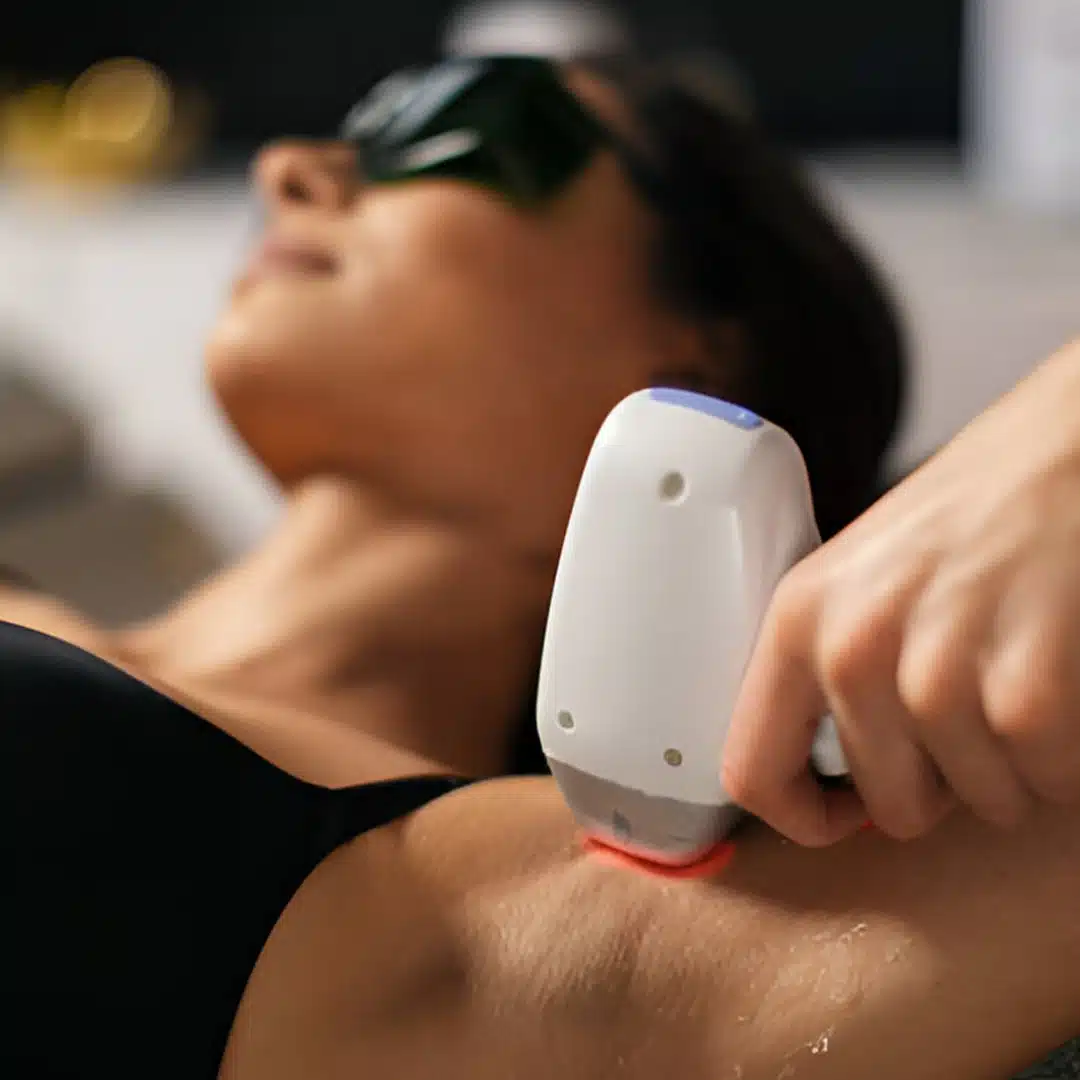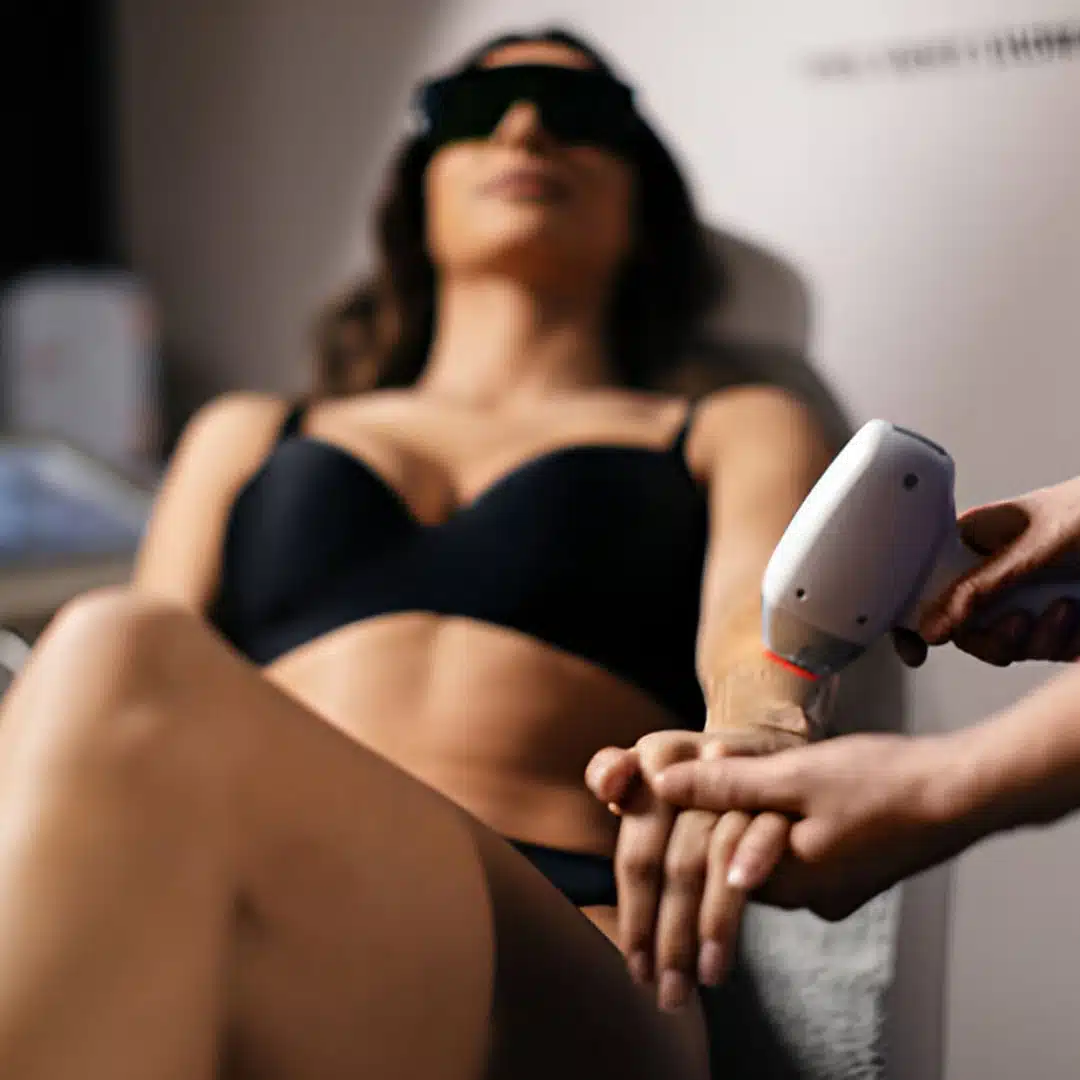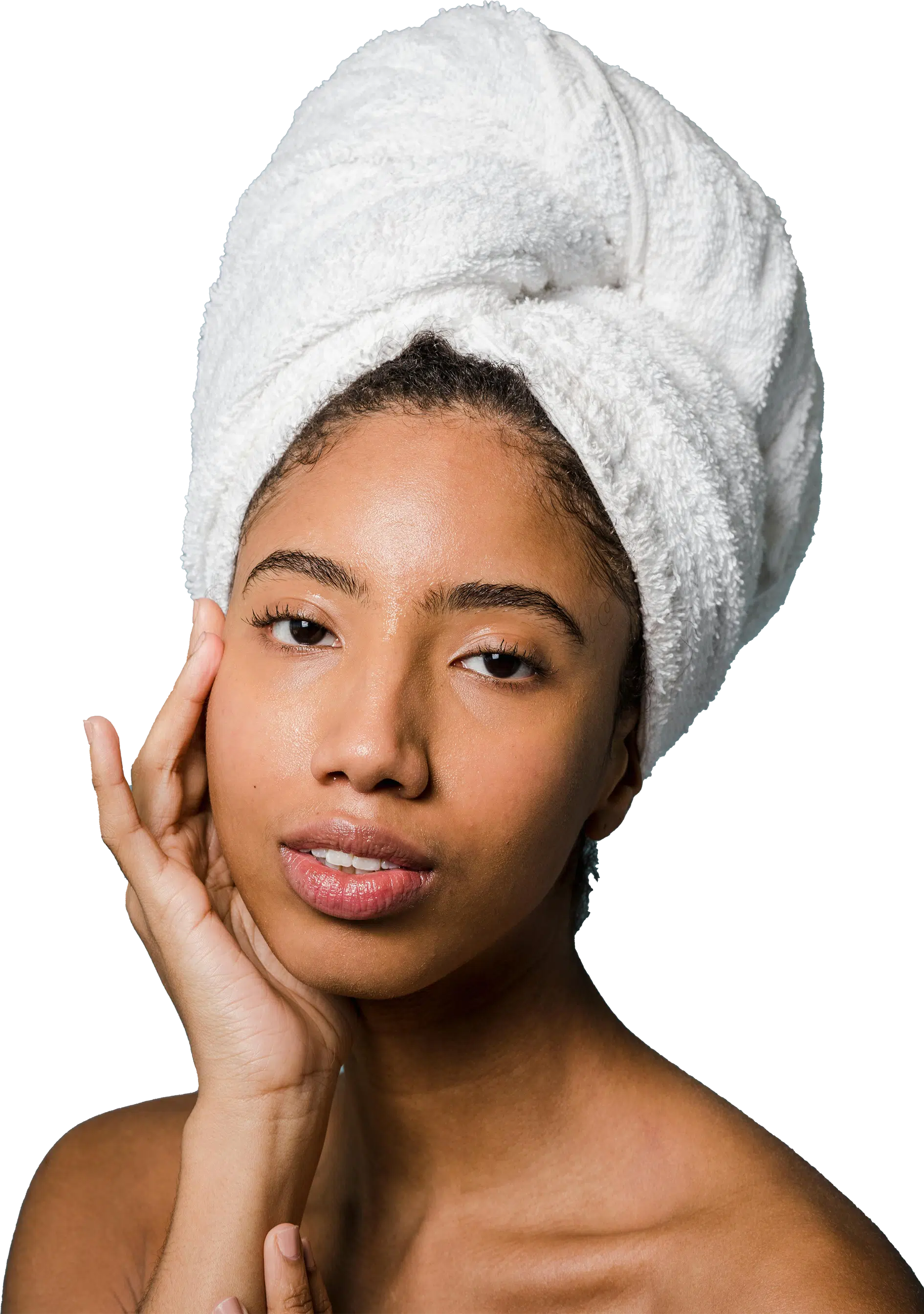Various laser technologies are employed in the Laser Hair Removal process, each suited for different skin types and hair colors. The Alexandrite laser is often ideal for lighter skin tones due to its effectiveness on lighter pigment. Conversely, the Nd:YAG laser is particularly beneficial for individuals with darker skin, as it targets deeper hair follicles while minimizing the risk of skin damage. Understanding how each laser interacts with skin pigment can help potential candidates choose the most appropriate method for their specific skin type. By selecting the right laser, clients can achieve effective and lasting results from Laser Hair Removal treatments.
Alexandrite Laser
This type of laser is recognized for its effectiveness in targeting hair follicles. It emits a specific wavelength of light that is well-absorbed by the pigment in hair. Patients often seek this method as an alternative to traditional hair removal techniques like shaving or waxing. Unlike these methods, which can result in razor bumps or skin irritation, this laser treatment minimizes such risks while providing long-lasting results.
Patients undergoing this treatment typically receive eye protection to shield their vision from the bright light. The laser is suitable for various skin types, particularly effective on lighter skin with darker hair. The precision of this laser allows for targeted treatment, ensuring the surrounding skin remains undamaged while efficiently reducing unwanted hair. This aspect makes it a favorable choice for individuals looking for a more advanced solution in the realm of Laser Hair Removal.
Diode Laser
The diode laser is particularly effective for Laser Hair Removal across various skin types. Its versatility allows it to target both dark skin and white skin with precision. Dermatologists often recommend this laser for patients seeking a solution that minimizes the risk of skin damage while providing reliable results. This makes it a favorable option compared to traditional methods, such as shaving, that may not offer long-lasting effects.
With a longer wavelength, the diode laser penetrates deeper into the hair follicle, ensuring effective treatment. This capability makes it suitable for a wider range of hair textures and colors, increasing its popularity among dermatologists. Patients can expect a more efficient process that often leads to permanent hair reduction. Choosing this method can significantly reduce the time and money spent on routine hair removal practices like shaving.
Nd:YAG Laser
This laser system is particularly effective for individuals with darker skin tones. The longer wavelength of the radiation allows for deeper penetration into the epidermal layer while minimizing the risk of damage to the surrounding skin. Unlike intense pulsed light, which can sometimes be less effective for deeper skin types, this technology utilizes a unique process called photothermolysis. This method selectively targets hair follicles based on their color and effectively reduces hair growth over time.
The versatility of this laser makes it suitable for various body areas, including sensitive regions. It efficiently treats a wider range of hair colors, making it a preferred option for many seeking Laser Hair Removal. Users can expect a treatment that balances efficacy with safety, ensuring optimal results. The advanced technology helps achieve smoother skin with fewer sessions compared to other methods, ultimately contributing to long-term satisfaction with hair removal outcomes.
Ideal Candidates for Laser Hair Removal
Determining the ideal candidates for laser hair removal involves assessing various factors, including skin types and hair colors. Laser hair removal is most effective on individuals with light skin and dark hair due to the contrast that enhances the laser's ability to target the pigment in hair follicles. Those with darker skin tones may also be suitable candidates, provided the right laser technology is utilized to prevent damage to the surrounding skin. Overall, laser-assisted hair removal offers a viable option for long-term hair reduction, aiming for permanent hair removal results. Understanding these characteristics helps potential patients make informed decisions regarding hair removal therapy.
Skin Types and Complexions
Laser Hair Removal is suitable for various skin types and complexions, making it an appealing option for diverse individuals seeking effective hair reduction. The procedure utilizes advanced technology to target hair follicles while preserving the surrounding skin. For those with lighter skin tones, the contrast with darker hair often enhances the effectiveness of in-office laser hair treatments, leading to substantial permanent hair reduction over time.
On the other hand, individuals with darker skin tones must choose the right laser to ensure safe and effective hair reduction. Certain lasers, like the Nd:YAG, are particularly adept at treating darker skin, minimizing risks of pigmentation issues. Laser Hair Removal can offer long-term hair reduction benefits across different complexions, allowing for a more tailored approach that meets each individual's unique needs.
Hair Color Considerations
Understanding your hair color plays a crucial role in the effectiveness of Laser Hair Removal. Darker hair absorbs more light from the laser, making the treatments more efficient. For those with light or blonde hair, achieving optimal results may require specific laser types that cater to lighter pigments. Maintenance laser treatments might be necessary for individuals with hair colors that are less responsive to conventional lasers.
Patients should avoid hair epilation methods like waxing before starting Laser Hair Removal. These methods can disrupt the hair growth cycle, making it challenging for the true laser to target hair follicles effectively. Consulting with a professional can help determine the most suitable laser type based on hair color to achieve the best removal results.
What to Expect During Treatment
During Laser Hair Removal, patients can expect a detailed and structured experience tailored to their specific needs. Prior to the procedure, an assessment of hair location and the presence of dark-colored hair is performed, as these factors significantly affect the effectiveness of the treatment. The laser targets the melanin in dark hair follicles, leading to hair regrowth that is significantly diminished over time. Unlike traditional hair removal methods, which require frequent maintenance, Laser Hair Removal offers a long-term solution. Patients may notice some temporary side effects like redness or swelling post-treatment, but overall, the process is designed to provide a precise and effective way to manage unwanted hair.
Pre-treatment Preparation
Preparing for Laser Hair Removal involves several important steps to ensure the treatment is effective. It's essential to avoid sun exposure in the weeks leading up to the session, as tanned skin can interfere with the laser device’s ability to target the hair matrix effectively. Understanding your hair type plays a crucial role in the process, as different hair types respond differently to laser technologies. This preparation helps establish a baseline for how your hair grows and can enhance the overall results of the treatment.
Before the appointment, clients should also refrain from plucking or waxing the hair in the treatment area. This is vital since these methods remove the hair from the root, which can hinder the laser's effectiveness on various hair types. Shaving the area is generally recommended, as it allows the laser device to focus on the hair shaft while leaving the hair matrix intact for optimal targeting. Adequate preparation ensures that the Laser Hair Removal process is as smooth and effective as possible.
The Treatment Session
During the Laser Hair Removal session, the technician selects the right laser based on individual needs, targeting dark hair effectively. The removal equipment emits concentrated light beams that specifically target hair follicles in the active growth stage. This precision ensures minimal impact on the surrounding skin while maximizing the effectiveness of the treatment.
The session typically lasts from a few minutes to over an hour, depending on the size of the area being treated. Patients may experience a sensation similar to a rubber band snapping against the skin. Applying a cooling gel before the procedure can enhance comfort. Following the completion of the Laser Hair Removal session, clients receive guidance on post-treatment care to ensure optimal results and minimize any potential side effects.
Post-Treatment Care
Following Laser Hair Removal, proper post-treatment care is essential to ensure optimal results and minimize any adverse effects. Patients should avoid sun exposure and apply a broad-spectrum sunscreen to protect the treated area. While most hair types respond well to the treatment, white hair and certain shades of pubic hair may not respond as effectively due to the lack of pigmentation. Understanding the hair growth cycle can help patients manage expectations regarding future hair growth, as it may take several sessions to achieve desired outcomes. Consulting with a skincare professional can also help determine how other skin treatment work may complement the effects of Laser Hair Removal.
Immediate Aftercare Tips
After undergoing Laser Hair Removal, it’s essential to protect the treated area from irritation. Avoid using a razor on the skin for at least a few days post-treatment to minimize the risk of cuts and infections. The laser energy targets the anagen hair phase, so keeping the skin calm helps ensure the best results. Light-colored skin may be more sensitive, so applying a soothing lotion can assist in reducing any redness or swelling that may occur.
Avoid exposure to direct sunlight right after treatment. Sun exposure can lead to pigmentation changes, particularly on light-colored skin. Instead, opt for protective clothing or a broad-spectrum sunscreen to shield the area. Steering clear of any IPL-based hair removal treatments is also advisable until the skin fully recovers. Following these immediate aftercare tips will enhance results and promote a smooth recovery process.
Long-term Care Recommendations
Caring for treated skin after Laser Hair Removal is crucial for maintaining results and promoting healing. Patients should avoid sun exposure to protect sensitive areas and consider applying sunscreen with high SPF when going outside. The long-pulsed alexandrite laser is effective for various skin types, yet proper aftercare remains essential, especially for those with brown skin. Regularly moisturizing treated areas can help soothe any lingering irritation and keep the skin hydrated.
For optimal long-term results, it is important to follow any specific recommendations provided by the practitioner. Different lasers may necessitate unique aftercare protocols, so consulting with professionals about the best practices tailored to individual experiences is advisable. Engaging in gentle skincare routines and avoiding harsh products will further support the recovery process after Laser Hair Removal, ensuring that skin remains healthy and hair-free.
Common Myths About Laser Hair Removal
Many misconceptions surround Laser Hair Removal, particularly regarding its effectiveness on various skin types and hair colors. Some believe that individuals with black skin cannot benefit from this treatment; however, advancements in technology, including the use of the alexandrite laser and normal-mode ruby laser, have made it possible to achieve excellent results on darker complexions. These lasers are equipped with filters that can differentiate between hair and skin pigment, ensuring that there is enough pigment in the hair for the laser to target effectively. Understanding these facts can help dispel common myths and encourage more individuals to explore Laser Hair Removal as a viable option for long-term hair removal solutions.
Myths vs. Facts
Many misconceptions surround Laser Hair Removal, particularly regarding its suitability for different skin types. It's essential to evaluate skin type iii, as this classification can effectively indicate whether an individual is a suitable candidate for the procedure. Using correct lasers tailored for various skin tones enhances safety and efficacy, making it important to consult with a professional to determine the best approach for individual needs.
Concerns about safety often lead to misconceptions about the use of eyewear during the procedure. Wearing protective eyewear is a standard practice in Laser Hair Removal to shield the eyes from potential laser exposure. This precaution, combined with the expertise of trained professionals, ensures that the procedure proceeds without unnecessary risks, debunking fears surrounding its safety and effectiveness.
Misconceptions About Pain
Many people believe that Laser Hair Removal is an extremely painful process. This misconception often stems from a lack of understanding about how selective photothermolysis works during the treatment. The laser targets hair follicles while minimizing damage to surrounding skin, which results in a more comfortable experience than anticipated. Most patients report feeling a sensation similar to a rubber band snapping against the skin rather than intense pain.
Another common belief is that individuals with darker skin tones experience more discomfort during Laser Hair Removal treatments. While skin color can influence the effectiveness of the treatment due to the contrast between the hair and skin, it doesn’t necessarily correlate with pain levels. Patients with tans may require adjustments in laser settings to ensure safe and effective hair reduction. Overall, pain during the procedure varies based on personal sensitivity, not skin color or hair type.
Understanding Potential Risks and Side Effects
Laser Hair Removal offers a promising solution for unwanted hair but comes with potential risks and side effects. Common side effects include redness, swelling, and minor discomfort at the treatment site, especially for individuals with different Fitzpatrick skin types. Those with darker or brown skin may be at a higher risk of experiencing hyperpigmentation. While most side effects are temporary, some patients may encounter rare complications that require attention. Understanding these risks is essential for anyone considering Laser Hair Removal treatments to ensure a safe and effective experience.
Common Side Effects
Laser Hair Removal can lead to several common side effects, which largely depend on skin types and individual responses. Some people may experience temporary redness and swelling in the treated areas, resembling razor bumps. These symptoms typically subside within a few hours to a few days. Proper eye protection is essential during the procedure to prevent any potential harm to eyesight from the laser.
Other minor side effects might include slight discomfort or a sensation similar to mild sunburn. In some cases, changes in skin pigmentation may occur, especially for those with darker skin types. These effects can impact the surrounding hair follicles but are usually not permanent. Awareness of these potential outcomes can help individuals prepare for their Laser Hair Removal experience.
Rare Complications
Laser Hair Removal is generally a safe procedure, but there are rare complications that can arise. Individuals with light skin may experience an unusual reaction to the laser pulses, leading to temporary skin lightening. Such effects are more likely if the treatment settings are not appropriately adjusted for the patient's skin type, particularly for those with lighter skin tones.
Another potential complication involves the treatment of vellus hair, often referred to as "peach fuzz." Some patients might notice an increase in visibility of this fine hair post-treatment. This can occur due to the selective targeting of darker and coarser hair during the Laser Hair Removal process, which sometimes leaves behind lighter hairs that can stand out more prominently after the procedure.
Comparing Laser Hair Removal with Other Hair Removal Methods
Laser Hair Removal offers a distinct advantage over traditional methods like waxing and shaving, particularly for areas prone to irritation, such as pubic hair. While shaving and waxing can cause discomfort and lead to issues like ingrown hairs, Laser Hair Removal targets the hair follicles directly, providing a more permanent solution. Many cosmetic surgeons recommend this method for those seeking long-term hair reduction. The precision of Laser Hair Removal minimizes the risk of irritation, making it an appealing choice for individuals with sensitive skin or those who want to avoid the hassle of frequent maintenance associated with conventional hair removal techniques.
Shaving
Shaving is a common method for hair removal that offers immediate results. This technique, however, can sometimes lead to skin irritation or ingrown hairs, especially for individuals with dark skin or sensitive white skin. Many dermatologists recommend considering alternatives like Laser Hair Removal for those seeking longer-lasting effects and a reduction in skin-related issues.
While shaving requires frequent maintenance, Laser Hair Removal significantly reduces the need for regular upkeep. Dermatologists emphasize the effectiveness of lasers in targeting hair follicles, which can provide a more permanent solution compared to traditional shaving. This makes Laser Hair Removal a more appealing option for individuals who are tired of the constant cycle of shaving.
Conclusion
Laser hair removal offers a modern and effective solution for those seeking to reduce unwanted hair. Utilizing advanced laser therapy techniques, this method targets specific hair colors, making it particularly effective for individuals with dark hair. While traditionally more challenging, advancements in laser medicine have made it possible to treat a wider range of hair colors, including red hair. The procedure minimizes discomfort and significantly reduces the long-term costs associated with other hair removal methods. Embracing laser hair removal means investing in a reliable and precise solution to achieve smooth skin and lasting results.





